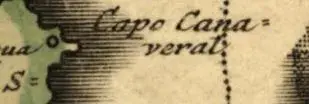Your answer in part lies within your post.
The Atocha and Concepcion are in deeper water. That makes their remains more intact and easier to salvage.
The 1715 Fleet is in the high energy shallow water environment. This make it much more difficult for salvage.
Paint this picture, you have treasure in water, open water 30 - 56 ft deep. Easier working.
You have treasure in water, rocky outcropping bottom shallow water, (not reefs - it's true and not just because the Govt is watching

) with depths from the shore on out to about 30ft of water.
So since the modern salvage started the easy pickins, the middle ground, middle depth of the sites where the methodology and equipment of the times were most effective had the most salvage work. The harder areas, closer to shore and deeper water weren't worked, since well, you got it, they were harder to work, equipment wasn't as efficient and cost would be higher. That and why leave areas that were constantly providing treasure to "go look elsewhere".
A perfect example of this is in
Pieces of Eight. Kip Wagner talks about some bronze cannon on a wreck. He also talks about and area with wreckage and is considered an "unknown" site. They are so busy pulling up gold and silver and lacking people that they can't even explore the bronze cannons further. They get stolen away in the middle of the night by someone else. That wreck site we now believe to be the 1618 Honduran Almiranta, which has produce some nice treasure over the years.
The "unknown" site is what we now know as Corrigan's site which has produced millions in treasure.
Speaking of Corrigan's site and another part to your questions. Not recalling exact numbers. If you were to mow the lawn with mailbox excavation using a liberal excavation measurement, taking into account an "average season" of 60 work days, an average amount of excavation accomplished, it would take something like 62 years to excavate the site. In the past several years 60 work days hasn't been reached which makes that 62 years grow exponentially.
So now back to the high energy shallow water environment.
Imagine recovering treasure in a location that the tide and time of day might only line up 3 times a month. Then you have to have weather, sea conditions line up with those. Often when all that does line up you still may get only 6 hours of actual excavation/recovery time.
As Mel used to say, "If it was easy, everyone would do it."
Oh but umm wait... no, no, no it's all been found, there's nothing to find, move along, move along. *wink*
There are people that want people to think that.





